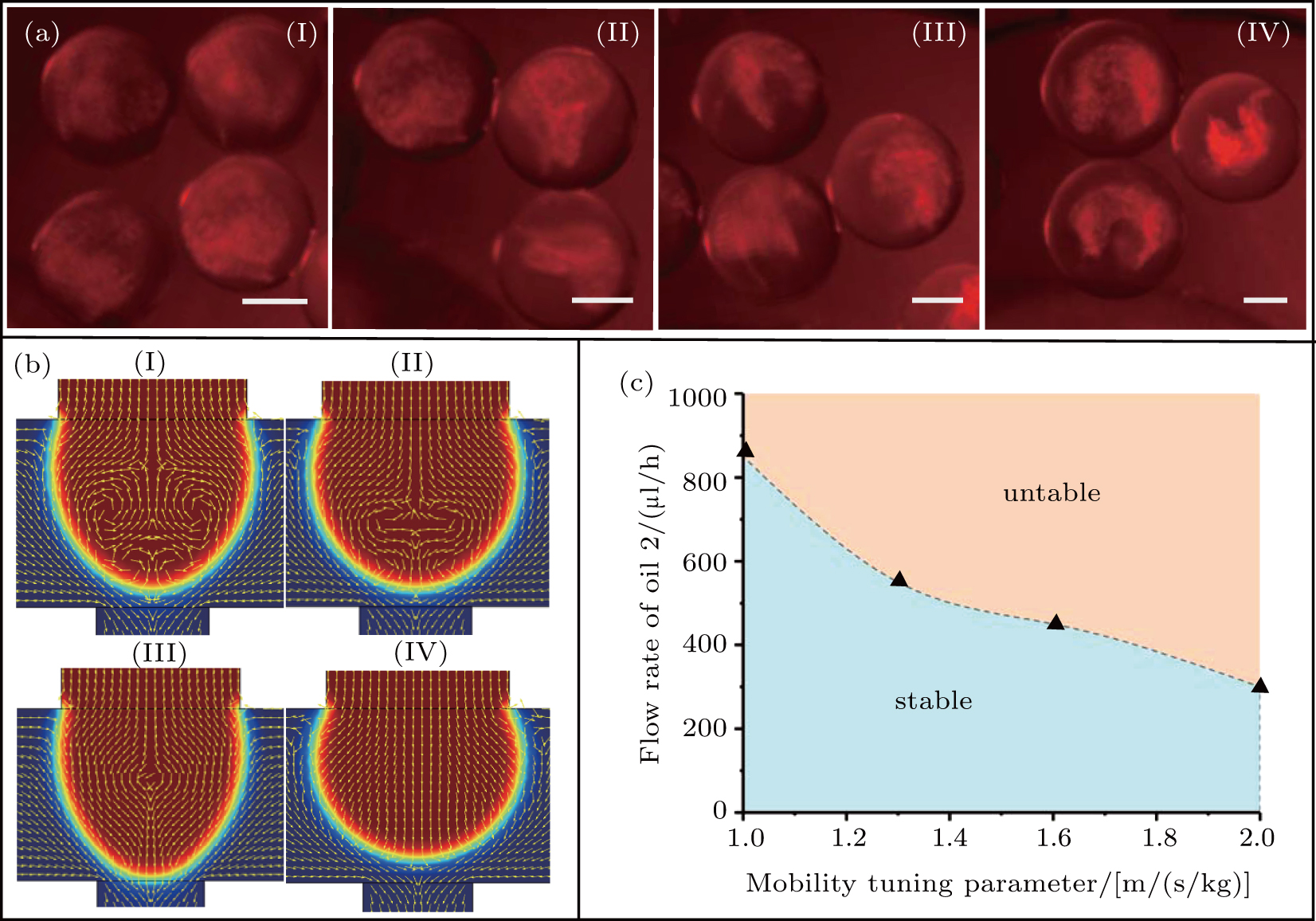Controlled generation of cell–laden hydrogel microspheres with core–shell scaffold mimicking microenvironment of tumor
Project supported by the National Natural Science Foundation of China (Grant Nos. 11474345, 11674043, and 11604030) and the Fundamental and Advanced Research Program of Chongqing (Grant No. cstc2018jcyjAX0338).
(color online) Simulation and experimental results for the influence of the flow rate of oil 2 on 2D velocity field. (a) With decreasing flow rate of oil phase 2, the structure of core–shell microspheres experience four stages from I to IV: complete mixing, partial mixing, weak stratification, and core–shell formation. The scale bar is 50 μm. (b) With decreasing flow rate of oil 2, the simulation results indicate that the 2D velocity field of deforming droplet also experiences four stages from I to IV: large recirculation, small recirculation, critical recirculation, and no recirculation. (c) As the value of mobility tuning parameter χ increases the critical flow rate of oil 2 becomes smaller. The blue surface represents the velocity field with a stable flow field (IV), and the brown surface represents the velocity field with an unstable vortex flow (I and II).
